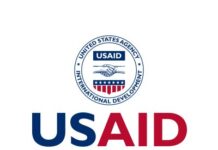
Last week’s announcement of Pakistan inaugurating a steering committee dedicated to integrated energy planning (IEP) – with the US support – is both a critical development on the power front and a diplomatic anomaly if recent developments between the two countries are anything to go – but we’ll get to that in a bit.
US Ambassador to Pakistan, David Hale chose to hint at the timing of the announcement as well, but arguably for completely different reasons, when he said the development came at a very “opportune” time. Perhaps he was hinting at the electricity and natural gas shortfalls, that have never been more acute in the country.
But what is Integrated Energy Planning, and how does it plan to solve Pakistan’s energy woes?
Pakistan is not the first country to be at the receiving end of an integrated energy plan: the idea has been afloat since at least the year 1985 and has been implemented in many developing countries, including South Africa.
The Pakistan Institute of Development Economics (PIDE) presents the idea in a simplified manner in their flowchart, implying that effective integrated energy planning simply entails an efficient balance of the supply and demand of energy in any given economy.
The International Atomic Energy Agency (IAEA) agrees with the core concept, elaborating further the complexities involved in devising an effective energy plan: energy must be provided across all economic sectors, be they agriculture, transport, industry, commerce, public administration, or private consumption and should aid in the acceleration of social progress, including a rise in income and making education and basic amenities like health care, clean water, and sanitation more accessible to the common person.
With so many variables in play, the process, naturally, is not an easy one. It involves the “production, conversion, transformation and distribution” of energy, in an environmentally efficient manner – i.e. according to a plan that ensures the production of minimal harmful by-products – that can be utilized for as long as efficiently possible.
Indeed, the factors are aplenty, which means that the planning is excessively complex. Hence, the need for an organized committee to devise and run an “Integrated Energy Plan”.
Even though the details might make integrated energy planning seem like a very cryptic notion, for a layperson, the concept can be explained as: it is, quite simply, a plan to provide a country with long-term, economically and environmentally efficient energy solutions.
It is, indeed, the need of the hour, and the importance of the United States’ aid on this front cannot be stressed enough.
Pleasant surprise
In the wake of US President Donald Trump’s threatening remarks against Pakistan, first in August this year and again in late September, the help offered by the superpower to the developing nation on the energy front might come as a pleasant surprise.
That is, until they realize that the MoU for the current collaboration over integrated energy resource planning was signed between the United States Agency for International Development (USAID) and Pakistan’s Ministry of Planning, Development and Reforms, back in November 2016 – under the Obama administration.
Would the Trump administration go through with the required support for a plan promised under the Obama administration? This is a huge question-mark.
Under the said memorandum of understanding, the United States Department of Energy and the Pacific Northwest National Laboratory have undertaken to provide Pakistan with “technical expertise and experience to work with ministries, provincial governments, and others to improve energy planning in Pakistan”.
The US government also claims to have encouraged private investors to invest in Pakistan’s energy sector through “two large investment conferences, new energy sector guarantees through private Pakistani banks, and helped distribution companies, such as K-Electric, adopt commercial practices”.
The United States’ end of the agreement entails the provision of technical expertise to Pakistan, with the goal of devising feasible policy and resource options in collaboration with Pakistani experts as well as policymakers, in mind.
Understanding impact of various policy options
The USAID seeks also to “help policymakers understand the impacts of different energy policy options” through this programme, in the words of USAID Mission Director John Groarke.

The Pakistani side of the equation, on the other hand, may seem simpler: make the best use of the technical personnel provided by the United States by training local staffs under their guidance, and using the former’s expertise to devise efficient integrated energy plans, that cater to the needs of the Pakistani public and private sectors in the most effective way possible. However, such a goal is easier articulated than espoused.
While lack of local technical personnel and funds may seem to be the biggest challenge in the path of efficient energy planning, relevant education and political willpower on the part of policymakers is the real hurdle that has held Pakistan back on this front.
Currently, the Ministry of Planning, Development, and Reforms and the Planning Commission of Pakistan has a three-pronged leadership: The Chairman is the Prime Minister of the country, Shahid Khaqan Abbasi, who is followed by the Minister for Planning, Development, and Reforms, Ahsan Iqbal – who is now the interior minister as well – and the Deputy Chairman of the Planning Commission, Sartaj Aziz, who was also the former Minister for Planning, Development, and Reforms.
Of the three, none has an all-encompassing educational qualification in the matters of energy production: while the prime minister is an electrical engineer by profession, the Minister holds a joint degree in mechanical engineering and business administration, while the Deputy Chairman majored in Development Economics back in 1963.
While it is true that all three have been educated at prestigious universities of the United States – George Washington University, University of Pennsylvania, and Harvard University, respectively – this very commendable fact does not make up for their lack of requisite technical expertise on the subject under consideration, which could prevent them from understanding the importance of efficient energy planning – one of the key goals set by Director John Groarke.

True, Prime Minister Shahid Khaqan Abbasi has frequently dappled with energy projects, beginning with his years of employment in Saudi Arabia in the 1980s, yet his forte is an area that Pakistan – and the world – needs to steer well clear of at the moment: non-renewable energy resources, particularly oil and gas. His recent moves in favour of importing LNG from Qatar to make up for the energy deficit in Pakistan more than illustrates his worrying frame of mind on the subject of energy production, favouring a combustible source to produce electricity in the country, instead of a number of feasible renewable options.
And having handled the Ministry of Petroleum and Natural Resources for four years before turning to the Ministry of Energy recently, it can be safely assumed that Shahid Khaqan Abbasi is very firmly in the driving seat when it comes to taking decisions on the energy front.
Without requisite political willpower, no amount of technical expertise from the United States or China can help eradicate Pakistan’s renewable energy woes.























